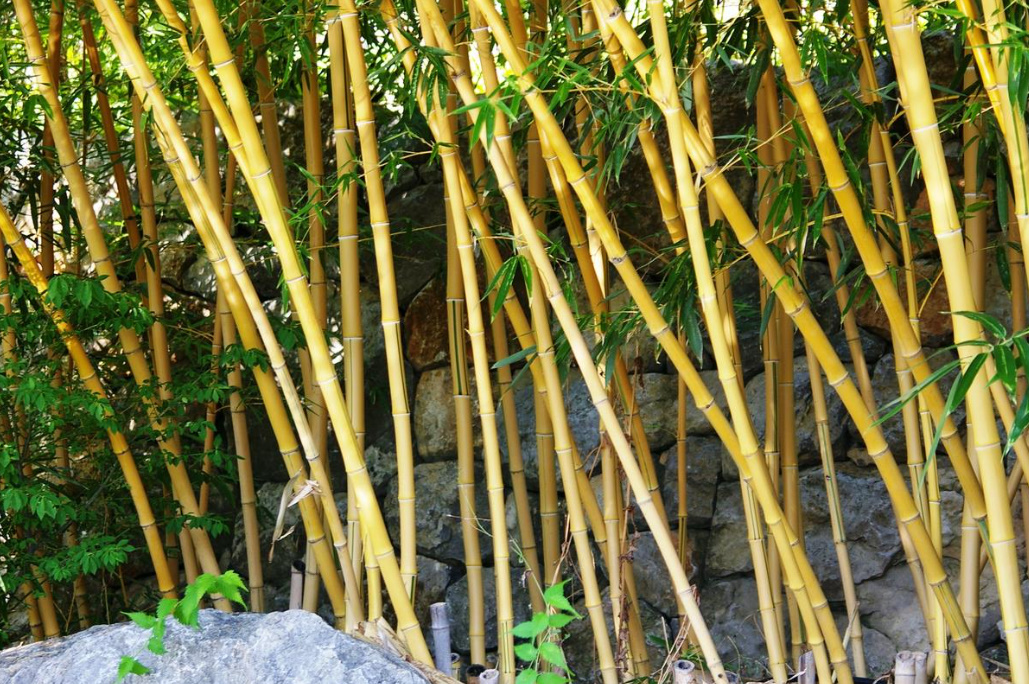
Today we will have a meeting with amazing woody plants — bamboos. They are so peculiar that dendrologists often distinguish even a life form — bamboo, which is similar to the rhizomatous shrubs of dicotyledons. They can not be confused with other arboreal, although they certainly have twin relatives (for example, Arundo donax). Let’s analyze together what is characteristic of these woody monocotyledonous plants.
The main features of bamboos
Like all cereals, bamboos have a hollow trunk — a lignified straw, the strength of which is directly related to the silica impregnating the cells. Bamboos are not capable of secondary growth: straws during one growing season, literally in 1-2 months, reach the maximum size in culture, after which they do not thicken and do not add height.
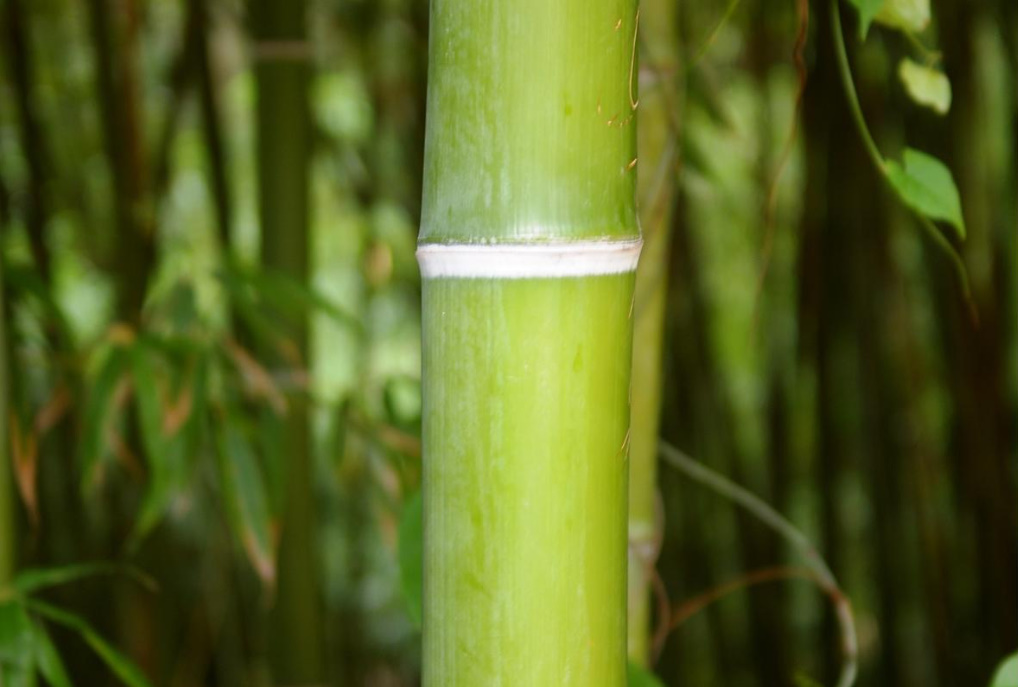
These are monoecious rhizomatous evergreen (with partial leaf fall in spring) plants. Their height in culture ranges from 60 cm and up to 15-20 m (on average). Shoots formed in internodes are short, branched, grow in bundles. The fruit is a grain, like all cereals.
Among them there are monocarpics that bloom 1 time in life and die off after (species of the genus bamboo), and polycarpics that regularly bloom and bear fruit from a certain age. There are also transitional forms that bloom for several years in a row, and then their rhizomes partially die off (leaf-bearing, mulberry). In culture, flowering is rarely observed.

Features of cultivation
These are heat-loving plants. The most winter—hardy are mainly rhizomatous bamboos, which actively grow in the spring: leafcutter, sasa, pseudosase and others. For them, shaded conditions and constantly moistened soils are optimal, with respect to the fertility of which they are not capricious. In parks where large curtains are preserved, large-scale sanitary cutting of all old straws is often carried out, after which the bamboo is watered and fed (superficially, abundantly) with organic fertilizers.
Bamboos are propagated vegetatively in early spring: by divisions — parts of the rhizome, solid lumps of which simply have to be cut down from the soil. At the same time, it should be borne in mind: the adventitious roots are weak, and in the planting coma they are not enough to immediately provide moisture to the aboveground part of the plant. Therefore, often when planting bamboos, the leaves curl, wither, and the straw itself dies. But do not get upset, because soon new straws begin to grow.
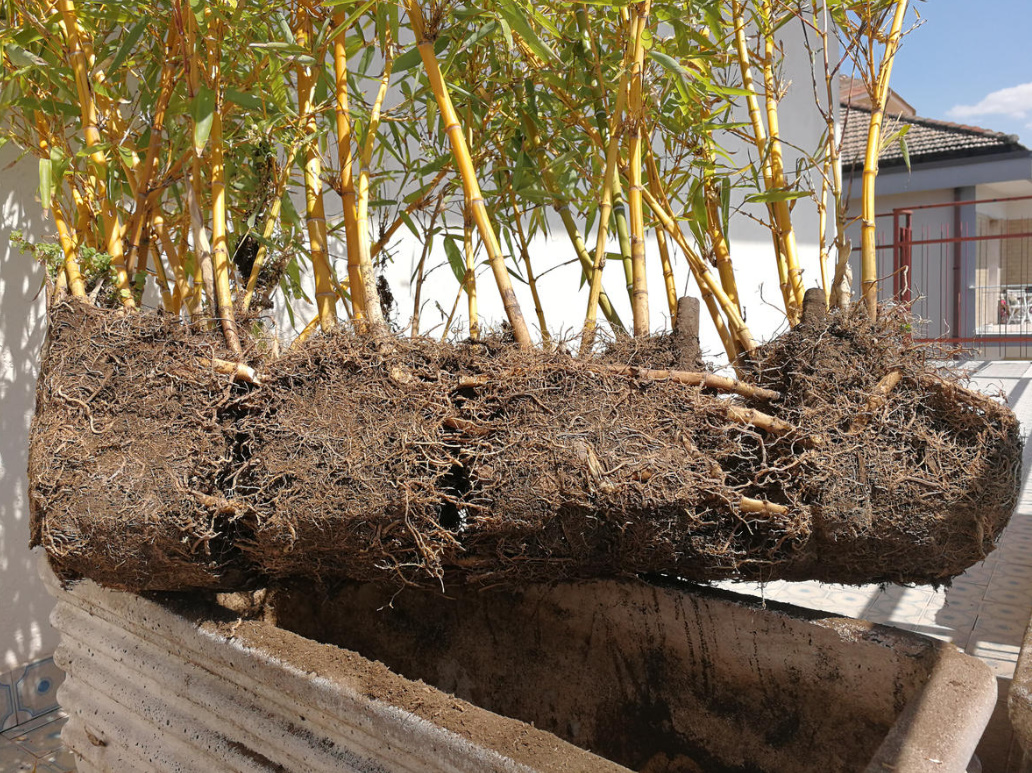
A serious argument against the decision to start bamboo on the site may be excessive overgrowth in optimal conditions for it. Moreover, even such solid limiters as deep ditches, concrete underground walls, metal rings do not always bring the desired result. The least aggressive of all grows in my dacha – Phyllostachys nigra, the spread of which is restrained by a non-drying stream, the most reliable natural barrier. Also, small isolated areas surrounded by wide concrete paths or platforms are ideal for planting them. It should be noted that this fly in the ointment — aggressive distribution — does not prevent the desire of real aesthetes who love tree-like cereals to start them at their dachas.
In small areas, bamboos are used in small groups. They are harmonious in the design of the plot in the Japanese style, they look good near a reservoir — a lake, a pond, a stream.
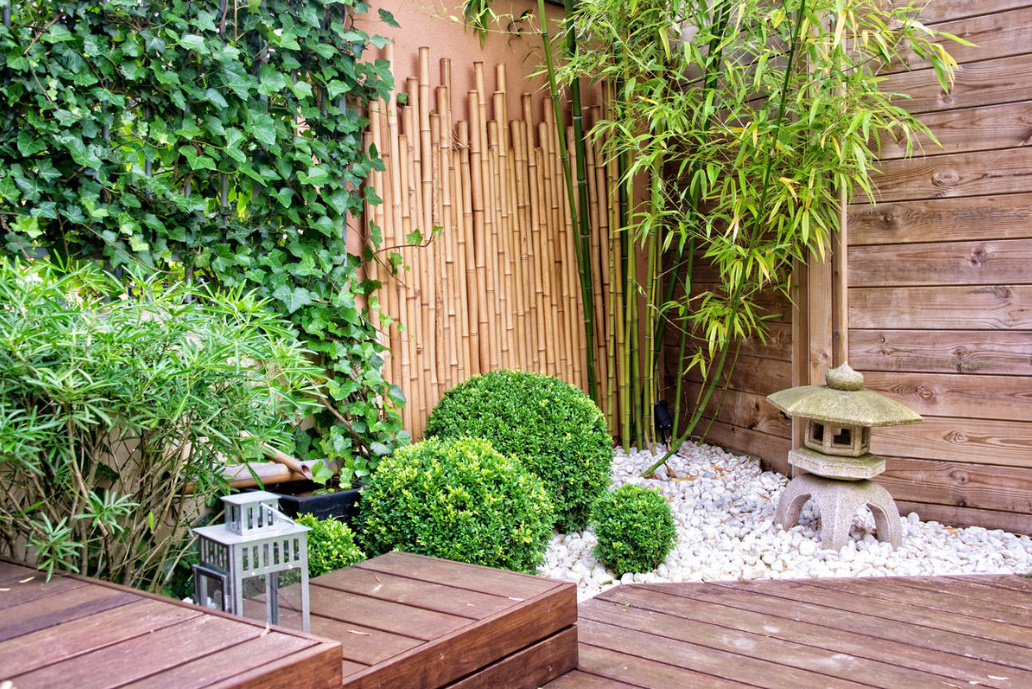
Phyllostachys
Phyllostachys — the most common in the culture of the middle zone are loose-rooted tree-like cereals with high, relatively thin, strong straws.
Ph. bambusoides
Ph. bambusoides ‘Allgold’. According to USDA data, winter hardiness corresponds to zones 7-10.
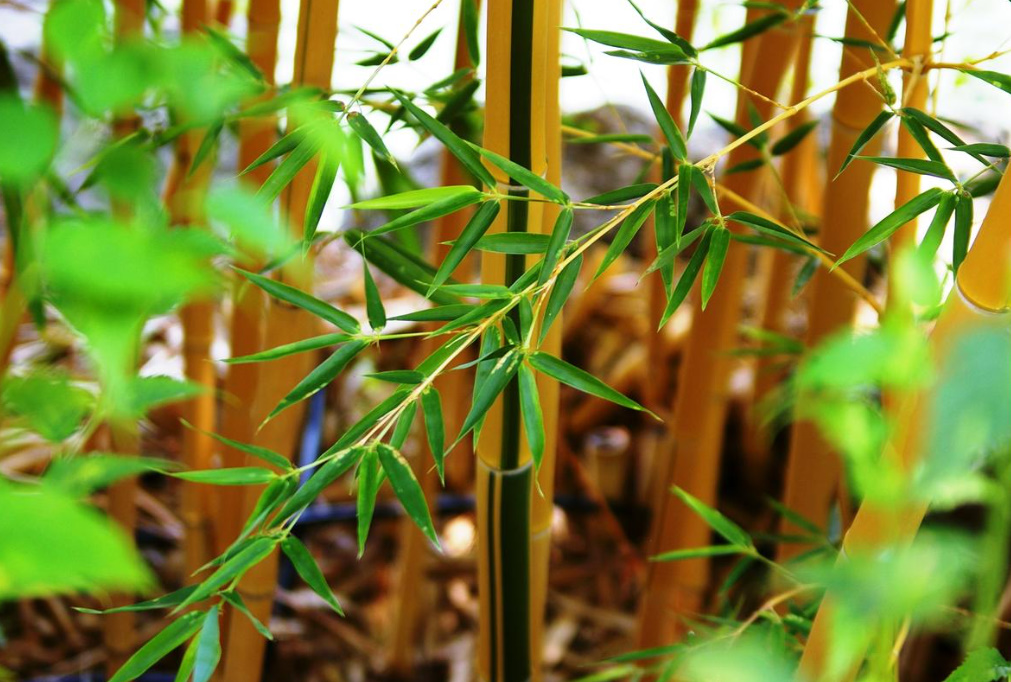
The stems are low, yellow, with large green stripes along the flattened side of the internodes. With age, the plantings become more dense and do not grow much. Based on personal observations, I can note that while Phyllostachys is growing slowly.
It reproduces well by peripheral processes of the rhizome. Ideally, in early spring, plant them in containers and grow them for 2-3 years before landing on a permanent place. But in a limited volume, the drying of the soil substrate should not be allowed. However, now this problem is easily solved: smart pot systems make it possible to exclude such situations.
Ph. viridiglaucescens
Ph. viridiglaucescens is the most common, unpretentious and tall bamboo. He is originally from Northern China. This species is considered one of the particularly hardy: according to the USDA — zone 6a-10.
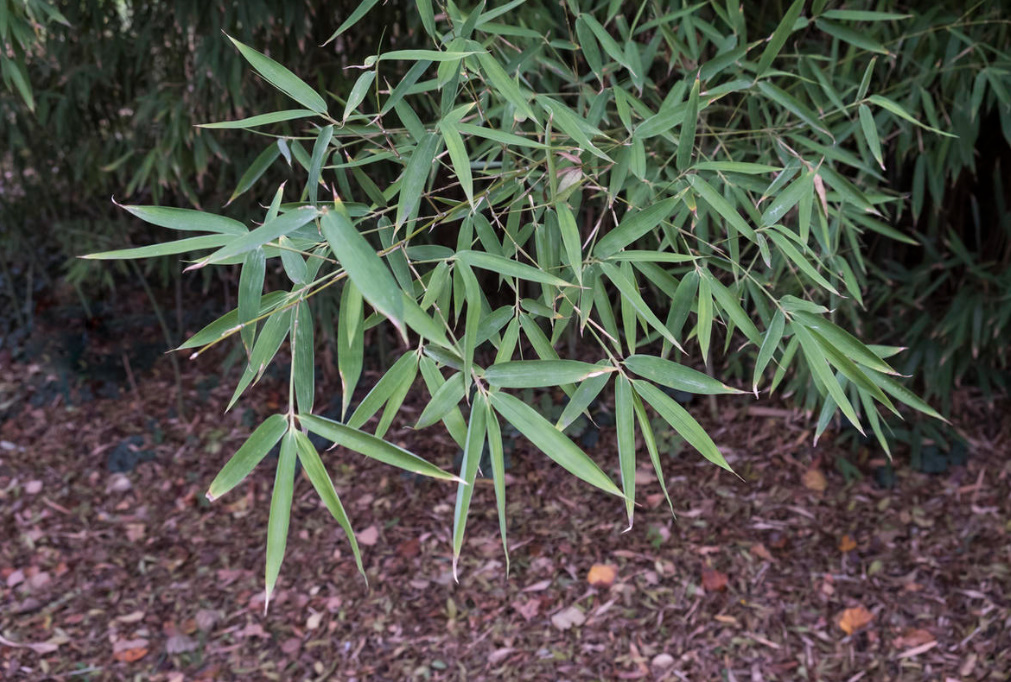
Stems up to 10-15 m high, straight, low-leaved, with drooping tops, bluish-green. The leaves are narrow, 12-15 cm long. It is demanding of soil moisture. The spring growth of young bamboos is very friendly and fast. It reproduces by divisions.
Ph. nigra
Ph. nigra is a very spectacular species with low thin straws, which acquire a brownish—black color by the end of the 2nd year of life. Winter hardiness, according to USDA data, corresponds to zones 7-10.
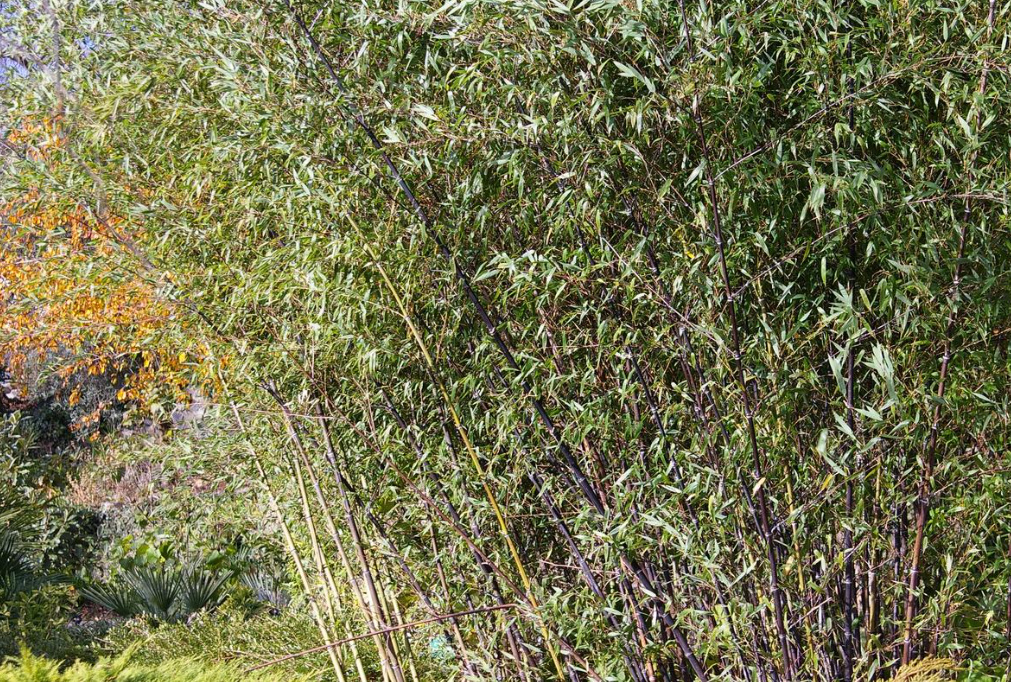
The tops are inclined; the leaves are small, narrow-lanceolate. It grows best on fertile loose soils in shading. One of the slowest growing species. It reproduces by divisions.
Pleioblastus auricomus, syn. Arundinaria auricoma, A. viridistriata, P. viridistriatus
Pleioblastus auricomus, syn. Arundinaria auricoma, A. viridistriata, P. viridistriatus is a vertically growing short—rooted bamboo up to 1.5 m high and wide. He is originally from Japan. Winter hardiness zones (according to USDA data) — 7-11.
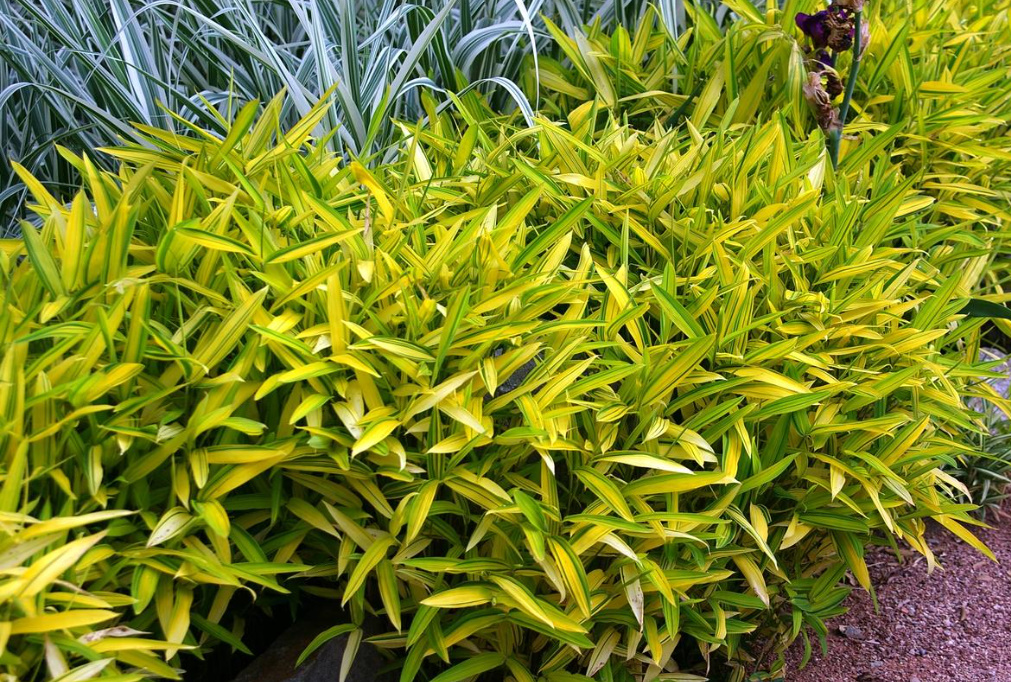
The leaves are up to 18 cm long, linear, with yellow-green and green stripes. It grows relatively slowly, forms dense, spectacular groups. It is propagated by divisions with growing in containers. It develops slowly on heavy clay soils, preferring light shading.
Sasa
Sasa are densely and loosely rooted reed—like bamboos with low thin bending straws and non-falling stem sheaths. The leaves are quite large, located at the ends of the lateral branches.
S. veitchii, syn. S. albomarginata
S. veitchii, syn. S. albomarginata is a thin—stemmed bamboo up to 2 m high, in culture — up to 1-1.2 m. It comes from Japan. Winter hardiness (according to USDA data) — zones 7-10.

Leaves up to 25 cm long . Their edges soon after blooming die off, become creamy, as a result, the plant looks variegated. It is not demanding on soils, prefers shaded places. Relatively non-aggressive appearance. It is propagated by divisions with growing.
S. palmata
S. palmata is a relatively low (up to 2 m) thin—stemmed long-branched bamboo. He is originally from Central China. Winter hardiness, according to USDA data, corresponds to zones 7-9.

The leaves are large, 35-40 cm long, oval-lanceolate. Propagated by large parts of the rhizome. It grows better in light shade on acidic fertile permeable, moist soils. It is a rapidly growing species, so it is better to plant in isolated areas. A spectacular plant, looks beautiful when planted near reservoirs.

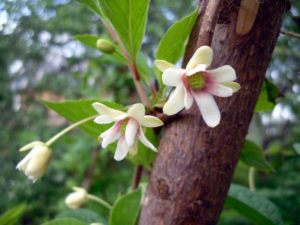
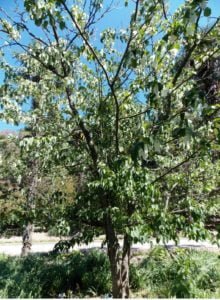
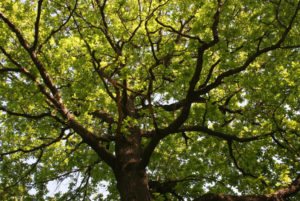
Leave a Reply